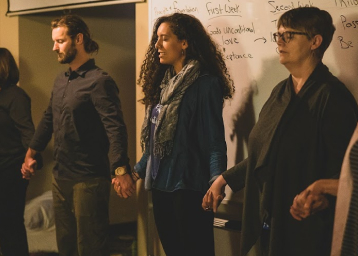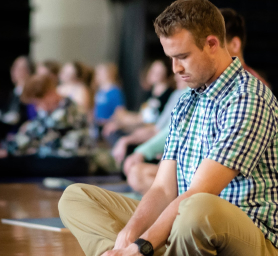


Contemplative Prayer
In contemplative prayer, we are seeking to know God directly rather than seeking to know about God. We are seeking to experience God’s presence.
It has deep roots in the Christian tradition, dating back to the Christian monasticism of the 4th century in Egypt. By the fifth century, St. John Cassian transported the tradition of meditative prayer to the Christian West. St. Benedict (480-547) made extensive use of John Cassian’s collection of teachings, and thus Cassian had a far-flung influence on monastic life in the West where this tradition of prayer remained strong until it was lost at the time of the Reformation.
Shortly before the Reformation, The Cloud of Unknowing was written by an unknown English Catholic writer of the 14th century. Mystics such as Teresa of Avila (1515-1582) and St. John of the Cross (1542-1591) also write of the power of contemplative prayer.
The long period dating from the 16th century Reformation up until Vatican II was, with just a few exceptions, a period when contemplative prayer in the Christian tradition went into hiding. Quietism was a contemplative movement found mainly in Italy and France. It espoused complete passivity and abandonment to God through an attitude of surrender in obscure faith. It discouraged all other forms of prayer and spiritual practices, including acts of virtue and devotion. Even evil actions were thought not to be sinful as long as the soul remained passive and resigned. Quietism was condemned because of moral implications at the Council of Trent in 1545. This resulted in the suppression of the monasteries in many countries and the prosecution by the Inquisition of forms of quiet prayer associated with suspicious illuminating experiences. (Even Ignatius was subject to this!)
Contemporary teachers have brought the scattered elements of the tradition together into a regularized and synthesized presentation for modern people. The CENTERING PRAYER movement was co-founded by two Trappist monks – Thomas Keating and M. Basil Pennington – and was deeply influenced by the work of a third Trappist monk Thomas Merton. CHRISTIAN MEDITATION came from two Benedictine monks – John Main and Laurence Freeman.
Both schools use the same source material, but there is a difference in emphasis on the importance attributed to saying the sacred word from the beginning to the end of the meditation.


HOW TO DO IGNATIAN CONTEMPLATION
Find a space that is relatively free of distractions and place yourself in a comfortable position
Choose a sacred word or short phrase as a tool for gathering your focus and intention
When you are ready, begin saying your sacred word slowly, distinctly, rhythmically
When you notice your mind has wandered, come back to your sacred word
It is recommended you sit for 20 minutes, twice a day